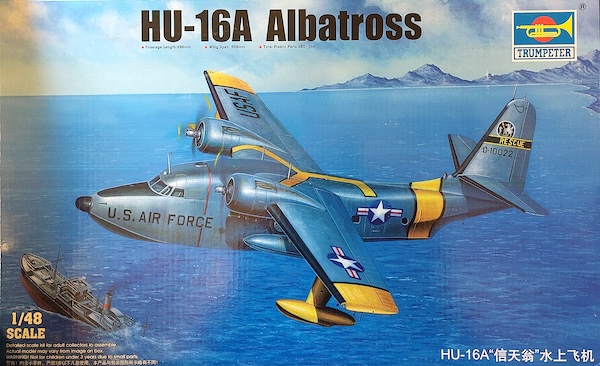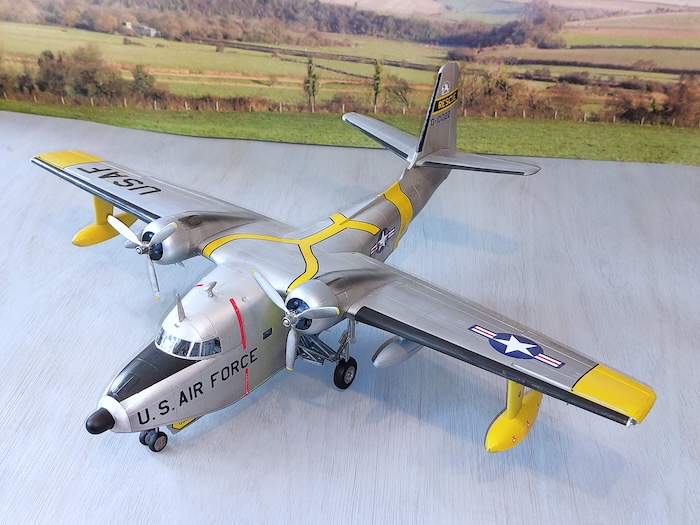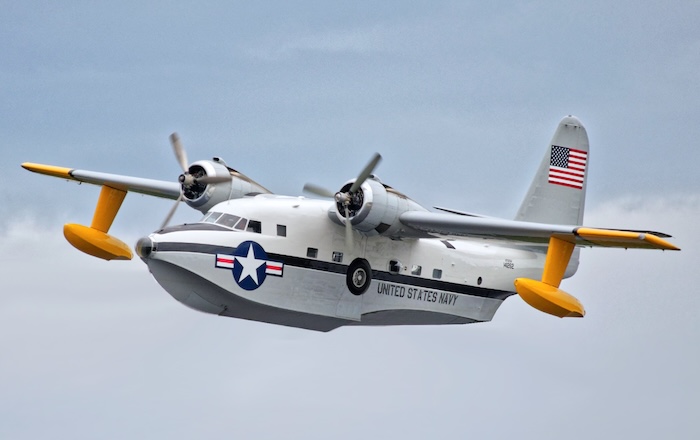
Full Review with Rob Ruscoe
And just before we get started, here’s a look at how it all turned out…

Based on the smaller Grumman Mallard, the Albatross was developed as a Search and Rescue platform with an open-ocean capability. Designed to be able to operate in over 4ft sea conditions, the aircraft could also cope with take-offs in 8 to 10ft seas with the use of JATO (Jet-assisted take-off) booster rockets. Powered by two Wright R-1820-76A nine cylinder radial engines each providing 1425hp for take-off, the three-bladed Hamilton Standard propellers were also fitted with reverse-pitch capability. Maximum speed was 205kt, a stall speed of only 64kt and a Max take-off weight of 37,500lb
The Albatross was used by the USAF in both the Korean and Vietnam conflicts primarily in its designed SAR role where it gained a reputation for ruggedness and reliability. It also gained the affectionate nickname of Dumbo. A small number of Air National Guard air commando groups also used the aircraft for covert infiltration and extraction of Special Forces in the years 1956 to 1971. The Albatross was also used extensively by the US Navy and Coast Guard until 1983. After retirement from the military many surplus aircraft were sold to civilian operators and many are still flown by private owners.

(Photo: A Grumman HU-16 Albatross ‘warbird’. Courtesy: Dylan Agbagni)
Amphibian Aerospace Industries, based in Darwin, Australia, acquired the type certificate and in 2021 it was announced that it planned to manufacture a new version of the Albatross commencing in 2025. Named the G-111T, it would have a modern glass cockpit and Pratt & Whitney PT6A-67F turboprop engines. We shall see if this comes to fruition.
The Kit
The kit arrived safely ensconced in Trumpeter’s usual sturdy packaging. On opening this substantial box it was immediately apparent that this was going to be a rather large model, even in this scale. It was full to the brim with sixteen sprues of flash-less styrene, a clear sprue, a fret of photo etch parts, two decal sheets covering two options and, thankfully, three white metal undercarriage legs. The instruction booklet is in the usual Trumpy style and proved easy to follow. As is also usual, the colour call-outs are best ignored in favour of a little digging on the internet.
Two options are provided:-
A. US Air Force 0-10022 which entered service in 1952 and currently resides in the Pima Air and Space Museum.
B. Chinese Air Force 11032 – History unknown.
In reality, unless you are Chinese, the USAF option is the obvious choice if you are building OOB.